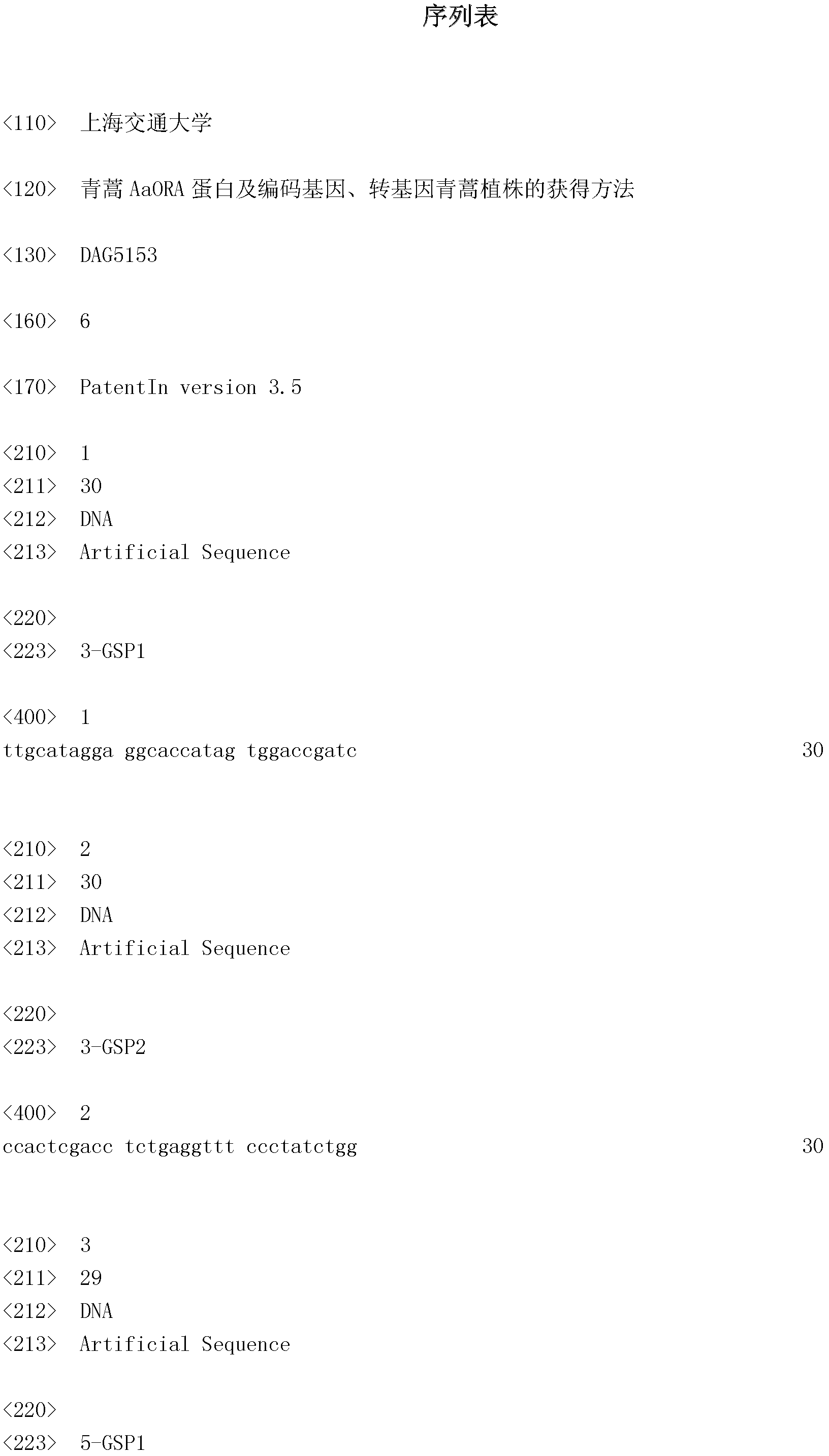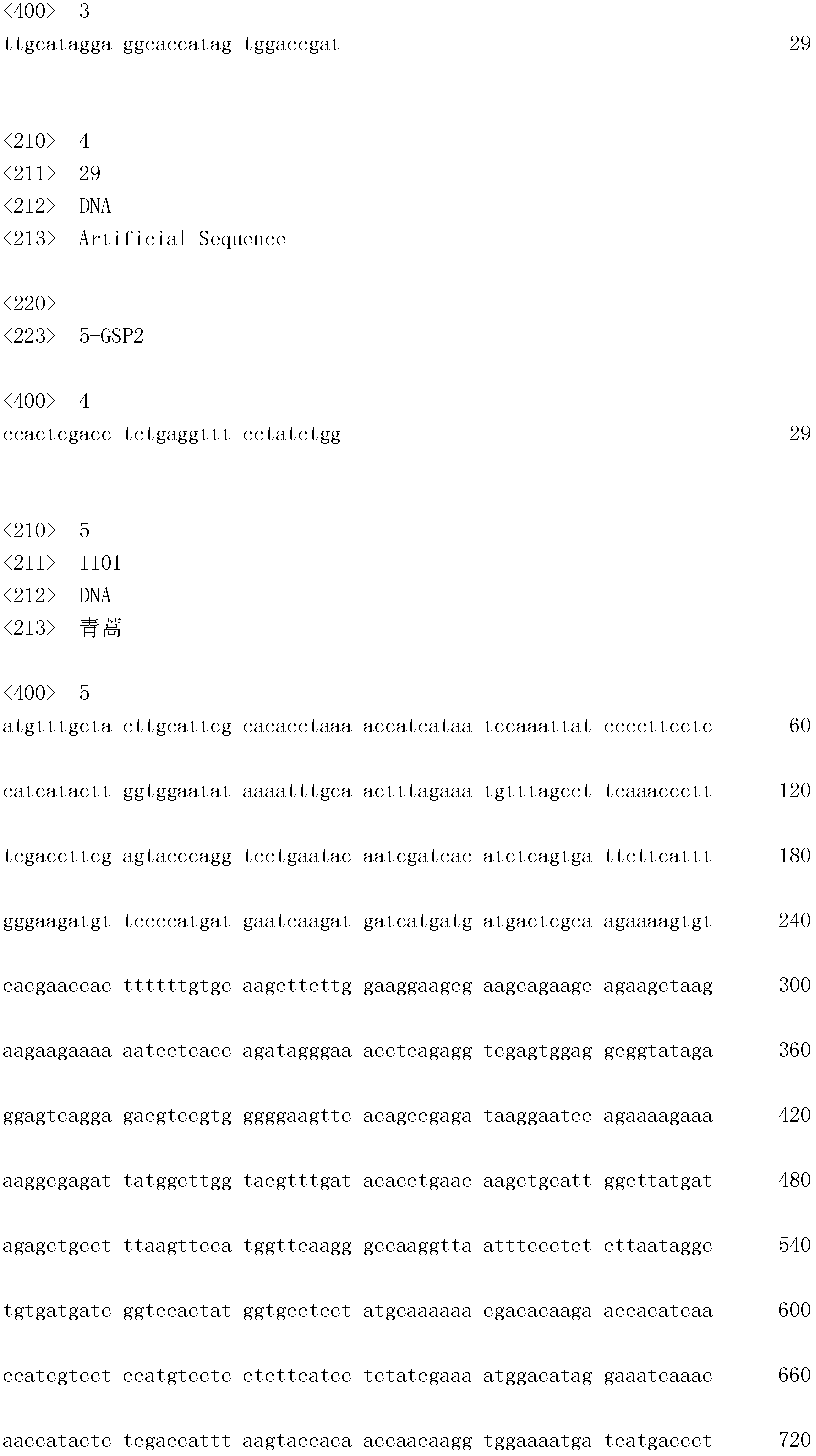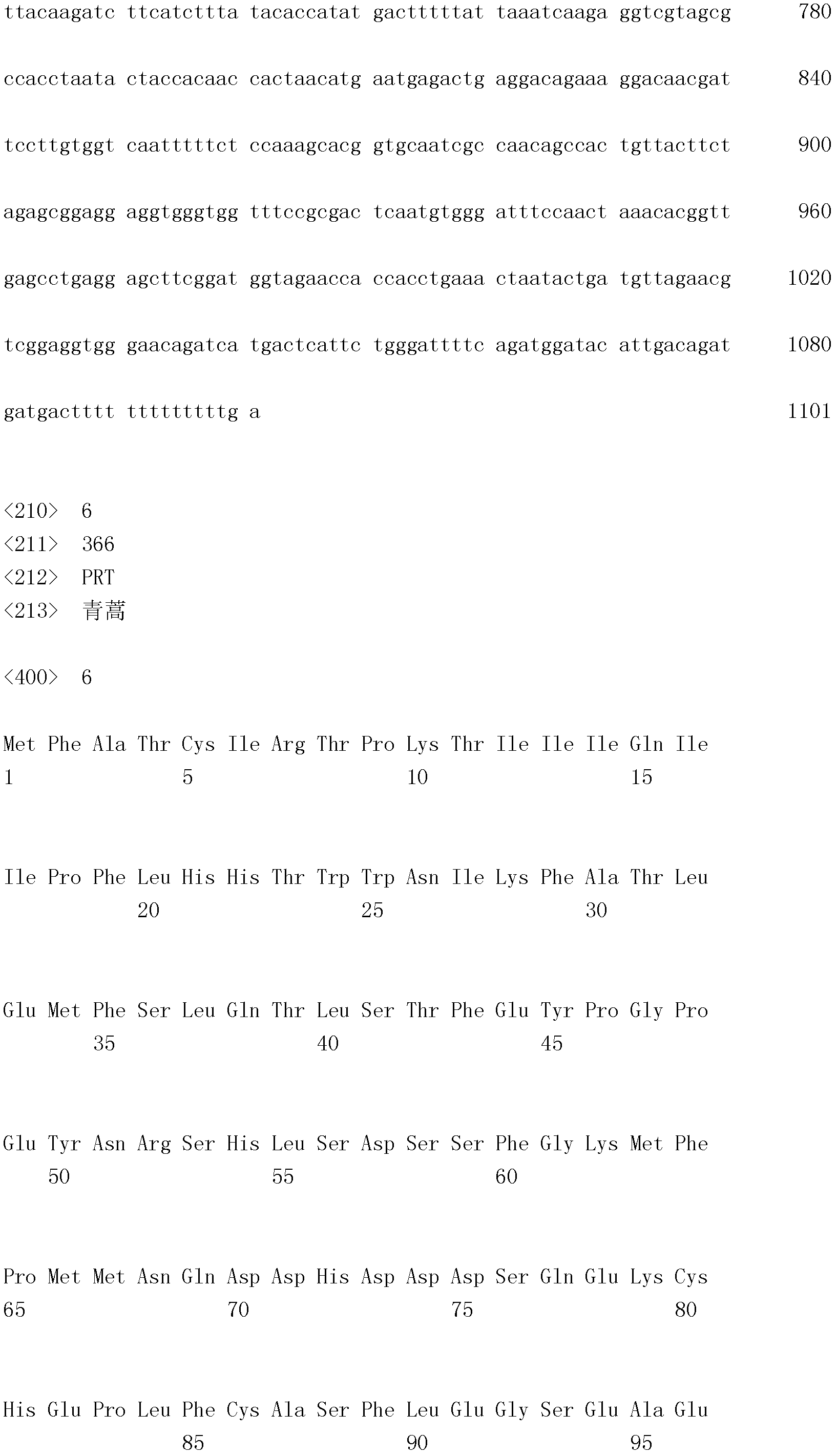Preparation method of artemisinin AaORA protein, encoding gene and transgenic artemisinin plant
An artemisia annua and protein technology, applied in the protein field in the field of genetic engineering technology, can solve the problem that a single gene modification is difficult to work, and achieve the effect of reducing the content of artemisinin
- Summary
- Abstract
- Description
- Claims
- Application Information
AI Technical Summary
Problems solved by technology
Method used
Image
Examples
Embodiment 1
[0026] Embodiment 1, the cloning of Artemisia annua AaORA gene
[0027] 1.1. Extraction of Total RNA from Artemisia annua Genome
[0028] Take the leaf tissue of Artemisia annua, grind it in liquid nitrogen, add it to a 1.5mL Eppendorf (EP) centrifuge tube filled with lysate, shake it fully, and extract total RNA according to the instructions of the TIANGEN kit.
[0029] The quality of total RNA was identified by formaldehyde denaturing gel electrophoresis, and then the RNA content was determined on a spectrophotometer.
[0030] 1.2. RACE cloning of the AaORA gene of Artemisia annua
[0031] According to the conserved sequence of amino acids encoded by related genes in Arabidopsis, using the principle of homologous gene cloning, the RACE (Rapid Amplification of cDNA Ends) method (SMART of Clontech Company) was adopted. TM RACE kit) for full-length cDNA cloning in three stages:
[0032] 1.2.1. Synthesis of first-strand cDNA
[0033] Take advantage of SMART TM The 5'-CDS...
Embodiment 2
[0040] Embodiment 2, the construction of the plant binary interference expression vector containing AaORA gene
[0041] 2.1. Construction of intermediate vector pBlucescript::AaORA
[0042] The pBlucescriptSK+ and gus gene fragments were selected as basic components to construct the interference expression cassette pBlucescriptSK+::gus. Specifically, SmaI single-digested pBlucescriptSK+ and the plasmid containing the gus gene; recovered the gus fragment and the large pBlucescriptSK+ fragment; ligated the recovered product, transformed and screened, and verified by digesting the plasmid pBlucescriptSK+::gus.
[0043] The AaORA-specific fragments were inserted into the pBlucescriptSK+::gus vector in forward and reverse directions, respectively. Specifically, pGEM T-easy+AaORA and pBlucescriptSK+::gus were digested with XhoI / HindIII, the large fragments of AaORA and pBlucescriptSK+::gus were recovered, connected and transformed, single clones were picked, and the plasmid pBluc...
Embodiment 3
[0047] Example 3. Agrobacterium tumefaciens-mediated genetic transformation of Artemisia annua to obtain transgenic Artemisia annua plants
[0048] 3.1. Acquisition of Agrobacterium tumefaciens Engineering Bacteria Containing AaORA Interference Expression Vector
[0049] The plant binary interference expression vector containing AaORA in Example 2 was transformed into Agrobacterium tumefaciens (EHA105, which is a publicly available biological material in the market, which can be purchased from Australia CAMBIA company, and the strain number is Gambar 1) by using the freeze-thaw method , and validated by PCR. The results showed that the plant binary interference expression vector containing AaORA had been successfully constructed into the Agrobacterium tumefaciens strain.
[0050] 3.2 Agrobacterium tumefaciens mediated AaORA gene transformation of Artemisia annua
[0051] 3.2.1. Pre-cultivation of explants
[0052] Artemisia annua seeds were soaked in 75% ethanol for 1 min...
PUM
 Login to View More
Login to View More Abstract
Description
Claims
Application Information
 Login to View More
Login to View More - R&D
- Intellectual Property
- Life Sciences
- Materials
- Tech Scout
- Unparalleled Data Quality
- Higher Quality Content
- 60% Fewer Hallucinations
Browse by: Latest US Patents, China's latest patents, Technical Efficacy Thesaurus, Application Domain, Technology Topic, Popular Technical Reports.
© 2025 PatSnap. All rights reserved.Legal|Privacy policy|Modern Slavery Act Transparency Statement|Sitemap|About US| Contact US: help@patsnap.com



